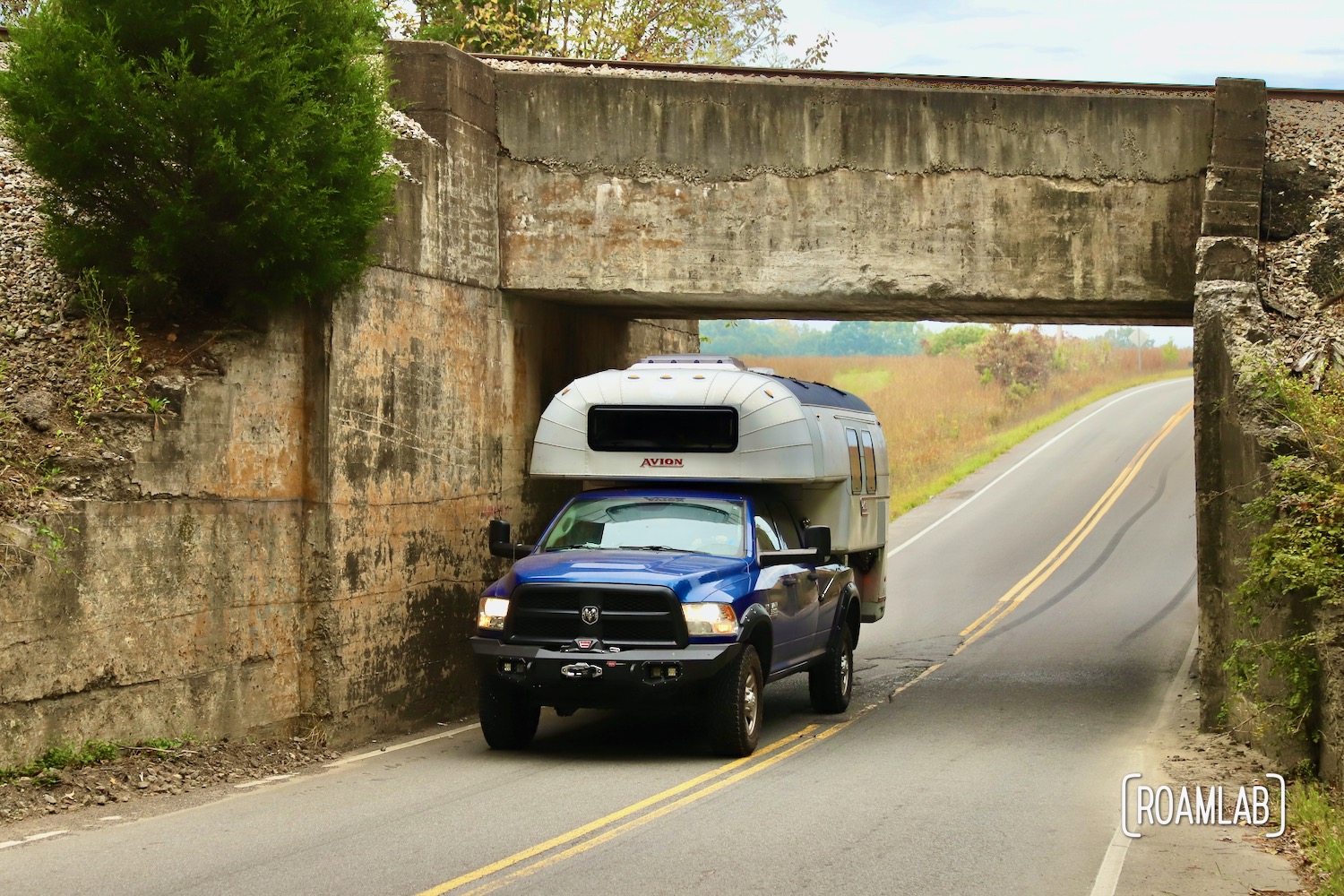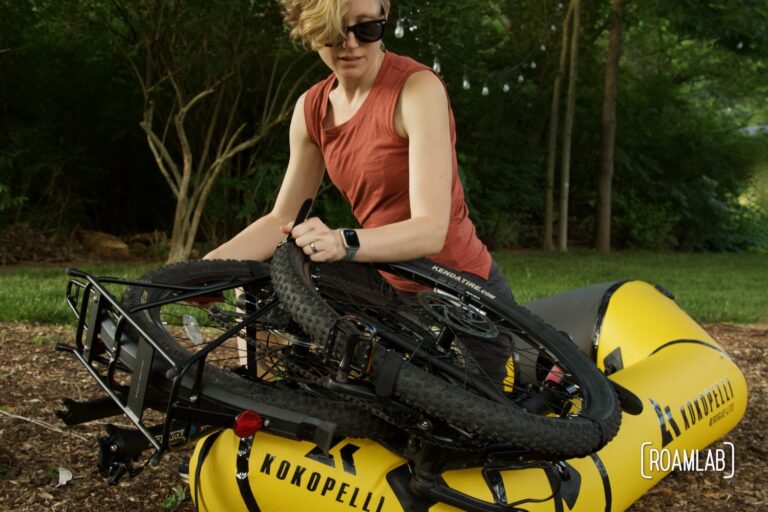It’s our favorite kind of road: scenic, winding, and completely empty. We haven’t seen another car since we left the campground. Instead, we watch trees decked out in lush spring foliage and wildflowers bobbing in the breeze. Our favorite kind of road until it isn’t. We stop and pull over in front of an old train overpass. Old enough for the years of exposure to leave a patina on the sides. Old enough to be built with little concern for vehicles larger than a van to travel under it. Can we?
Height is generally an afterthought when driving a truck, van, or car. But as soon as we slap on a roof extension, load a truck camper, hook up a 5th wheel, or hop in a motorhome, all bets are off, especially the further east we travel. Modern overpasses are constructed with 18-wheelers, fire trucks, and other oversized vehicles in mind. But old roads lead to old (sometimes historic) bridges built back when no one was concerned about petting issues of RV clearance.
Fortunately, most of these bridges include a sign with the bridge’s height. So drivers can asses their clearance before passing under. They can, but far too many times, they don’t. Miss the low overhead, and there may be a lot more that we will miss on the other side. Youtube is full of videos of large vehicles losing vents, ladders, roof mounts, air conditioners, and even their roofs to the sheering effect when an oversized vehicle meets an immovable low-hanging span.
Of course, that number is only useful if we know our height. There is no single height for all RVs. A camper’s design, roof mounts, mounting equipment, and tow vehicle can all make a difference in the absolute height while driving. So, measuring the height of a rig is the responsibility of each individual RV owner.
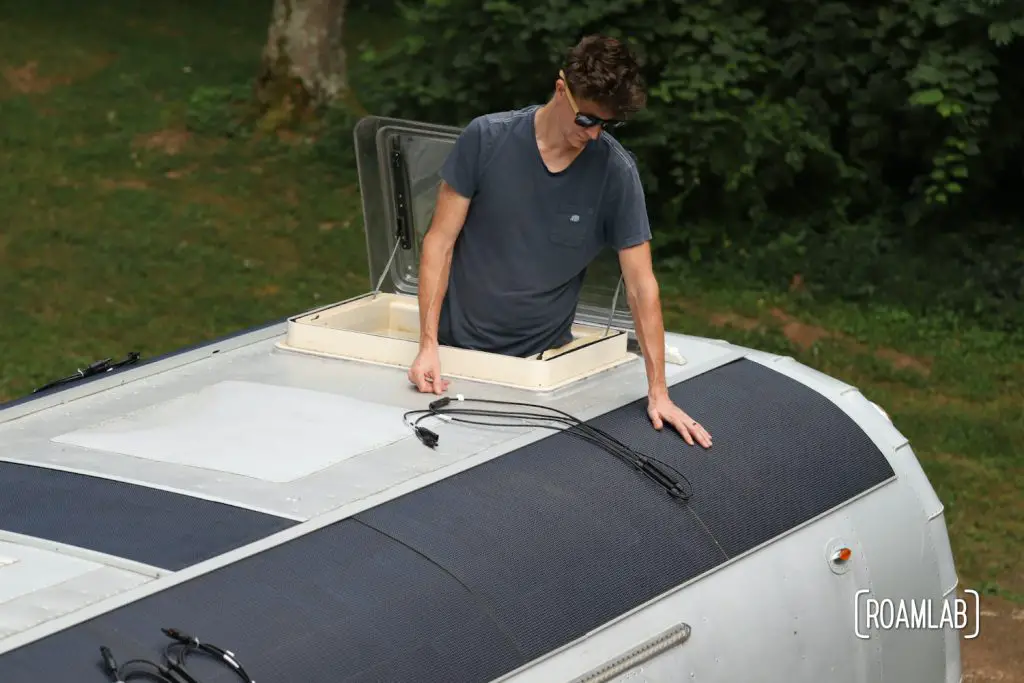
Measuring Our Camper
Knowing the height of our camper is something we want to know before we need to know it. While in our early example, we were able to pull off the road and inspect the overpass, that isn’t always an option. Sometimes, traffic, speed, and limited offramps allow for only spur-of-the-moment decisions as to whether we will attempt an underpass or risk blocking traffic while attempting to reroute. Once we have our RV and before we go on any new roads, it’s time to measure its height.
First, make sure that we are measuring under regular driving conditions. If we tend to mount items such as kayaks to the roof, we would have them mounted when we measure. If the camper is hitched or sits in a tow vehicle, ensure it is mounted to its normal vehicle. Even small variations, like the presence of a friction mat, can make a difference.
Next, it’s important to identify the highest point of the camper. This is rarely the roof. Most RVs have vents, storage racks, air conditioners, hatches, antennae, and other hardware mounted to the roof. This can be particularly complicated if our roof is not level. It can help to park our rig next to a level roof line as a point of comparison.
Finally, it’s time to measure the max height. This can be complicated since it’s unlikely that there is an unobstructed line to measure. Instead, we likely need to measure a secondary marker.
Currently, the tallest object on our roof is our roof hatch. So we balanced a 2×4 with a level on the highest point of the curved hatch lid so that each end of the 2×4 hangs over the sides of the camper. One of us holds the 2×4 level in place while the other measures each side to ensure we aren’t accidentally getting a skewed measurement. We average the two amounts to get the height of the camper.
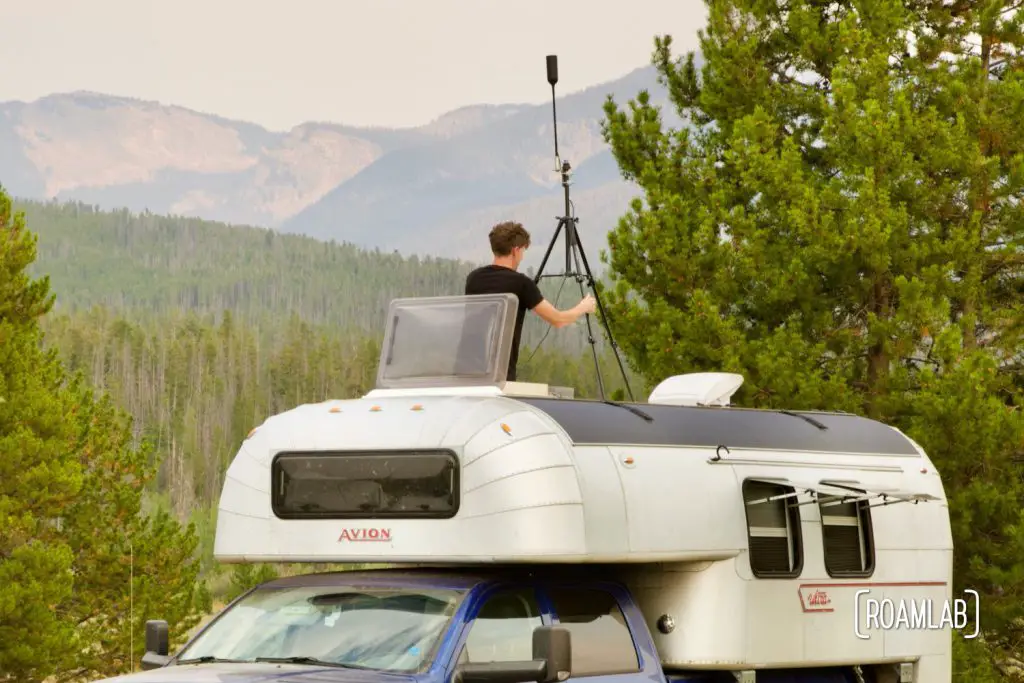
RV Clearance On Road Trips
Granted, knowing our camper’s height is only the first step. With this knowledge, we must apply it, which can be tough. Specialty services for sale will propose routes with our vehicle’s specific dimensions in mind. The larger our rig is, the more valuable these services are. That said, despite our height, we have managed fairly well with conventional mapping tools. We just have to keep certain rules of thumb in mind.
Check Ahead
Particular geographic regions have a greater likelihood of clearance issues. Older towns and cities, particularly out east, may have historic bridges and tunnels from an era before our modern vehicles. Public parks often take a minimalist approach with their roads and also preserve old structures. Jeep trails, forest roads, and other unmaintained trails through wooded areas are often overgrown with branches that can scratch, dent, or fully block a large vehicle. Keep an eye out for small roads with water crossings, railway intersections, or mountainous regions that will likely have bridges, overpasses, or tunnels. The windier the road, the less likely it was designed with large vehicles in mind. Fortunately, a lot of these areas have rangers, tourism bureaus, or other representatives that we can call ahead and check if they have had trouble with past RVers damaging their rigs.
Stay Alert
More often than not, however, these low clearance obstacles come as a surprise. Just not a complete surprise. There are often signs before the last opportunity for a turn-off, including the clearance of the potential obstacle ahead. And there will almost always be a sign on the bridge/overpass/span that indicates its clearance. So keep an eye out.
Be Conservative
“Maybe” isn’t a good enough answer when deciding if our camper can clear a tunnel. Our camper is 10′ 6″, but that doesn’t mean we’d attempt an overpass with that exact clearance rating. There are potential bumps in the road and inconsistencies on the overpass that could have us smashing our roof hatch. Instead, it is a gut check so that when we see a bridge with 11″ clearance, we are comfortable to carry on while other taller vehicles may have to reroute.
When in doubt, round up! It’s far better to think our rig is taller than it is than shorter than it is.
Don’t Hesitate to Turn Around
If we aren’t sure we can clear an overpass and we can’t safely scout it out ourselves, we will turn around. This can be tough. A lot of these obstacles are in remote areas where there isn’t some quick workaround. But a miscalculated attempt can have devastating repercussions. If we can’t weigh our options with a clear mind, and feel certain of our conclusions, then it’s time to look for another way.
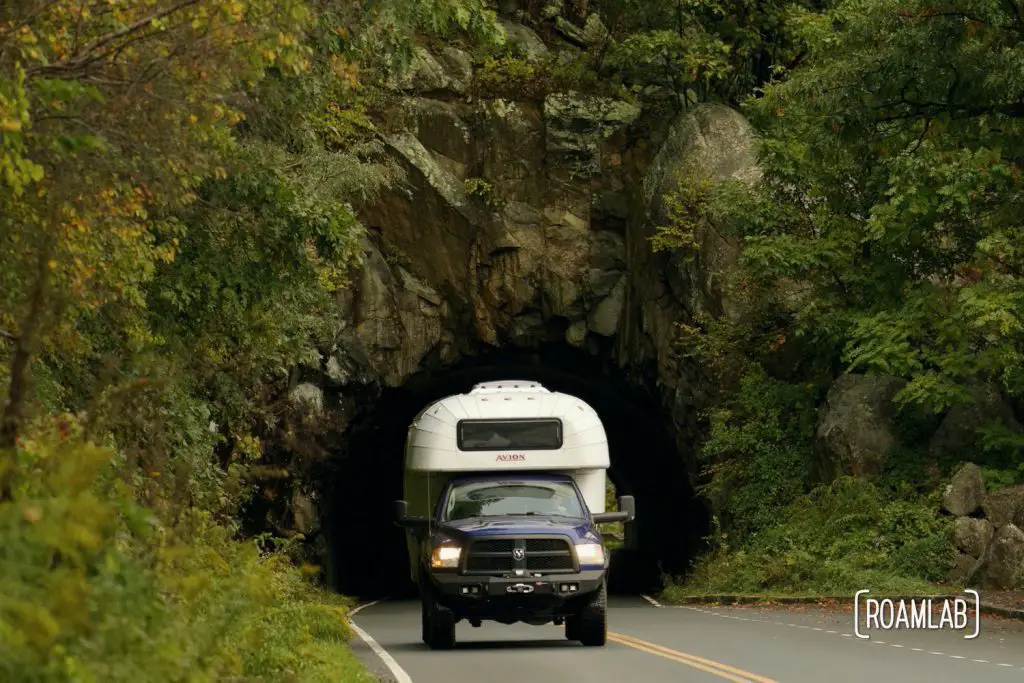
Measure Early, Measure Often
Even if we knew our rig’s height, it doesn’t hurt to remeasure. In fact, the results can be surprising. Aftermarket modifications can significantly alter our clearance. Our rig height has changed many times:
- when we removed a tall exhaust pipe
- when we installed a roof hatch
- when we increased our tire size.
Yup! Don’t forget that mods to our vehicle can also change our overall clearance. Lift packages raise more than just our trail clearance. Adding a flatbed can easily add several inches to our overall height. It’s a popular mod for truck campers that we did not join, instead opting for a custom utility bed that did not raise the camper. But don’t think we didn’t check.
So, with Memorial Day around the corner and camping season revving up, ensure you know your rig’s current height.


